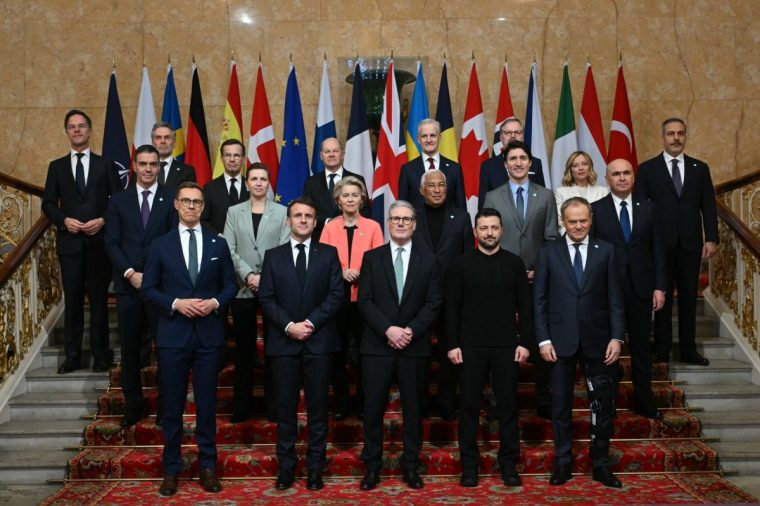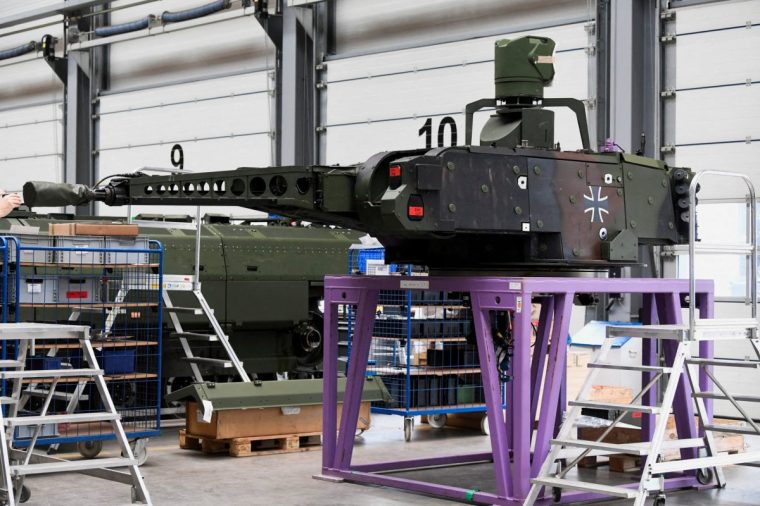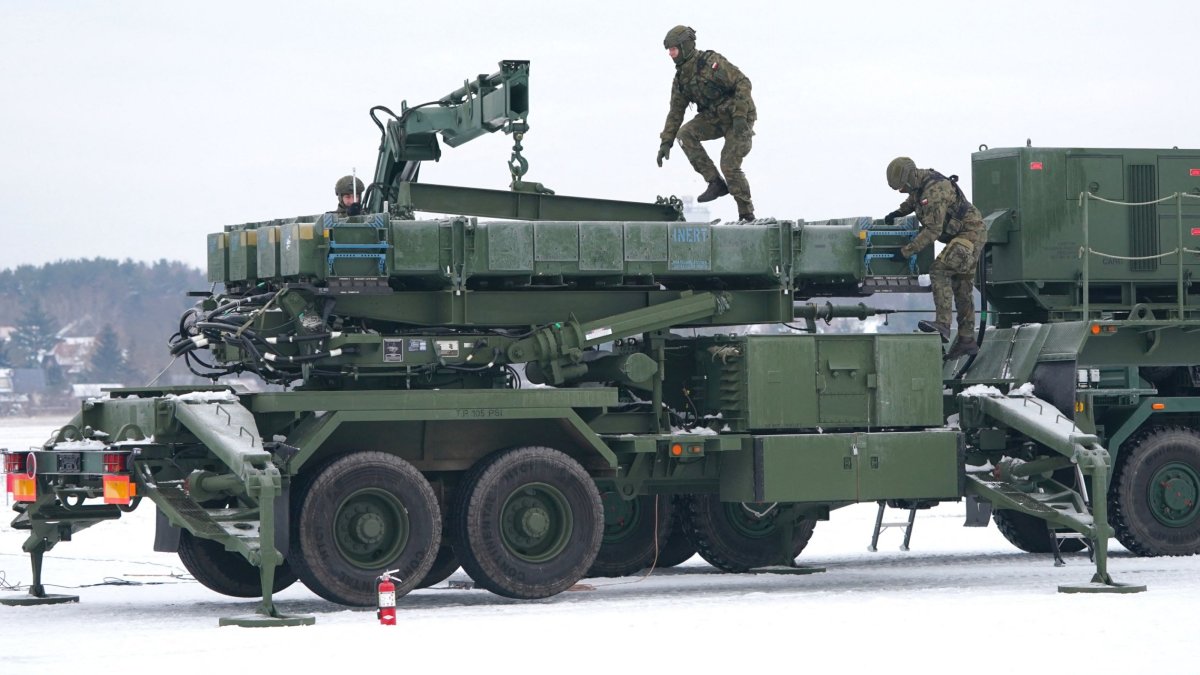EU draft plan also discusses weapons production using ‘like-minded third-country companies’ – likely to include Britain
BRUSSELS – The EU appeared to leave the door open to British companies being part of its joint £150bn defence fund as it published its strategy to be less reliant on the United States.
According to plans set to be unveiled in Brussels today, the EU should begin a massive programme to build its military-industrial complex to deal with both Russian aggression and US pullback from Europe.
The proposed measures include favouring weapons production within the EU. While a draft of the report suggested “like-minded third-country companies” – assumed to refer to the UK as well as Turkey – should be inluded, the published document stated: “The EU should continue mutually beneficial engagement and cooperation in the field of security and defence with all like-minded European, enlargement and neighbouring countries.”
While there are expected to be heated debates within the EU on how strict the “European preference” should be, Britain is expected to be included, reflecting increasing engagement between the UK and other European countries on defence and Ukraine.
This would be a win for Keir Starmer’s Brexit reset given the Prime Minister called for “industrial collaboration” in defence at an informal dinner with EU leaders in February. Countries including Germany have been supportive of UK involvement in defence procurement, but France has been resistant.
Nick Thomas–Symonds, the minister in charge of Britain’s EU relations, who told a European Parliament meeting Brussels on Monday that it was time to strengthen the strategic alliance between the UK and the EU.
“We share the same priorities – security, safety, the strength of our economies – and shared priorities are not tackled individually, as you have terrorists, rogue states, criminals out there seeking to create division. The EU and the UK are stronger united,” he said.
In a joint article in Politico on Tuesday by Foreign Secretary David Lammy and EU foreign policy chief Kaja Kallaswrote: “In a world on fire, a new era in security and defence co-operation between the EU and UK is essential to keep our countries and people safe.”
The document also contains a ‘buy European’ clause, however, outlining that products should be bought from “entities established and headquartered” in the EU, it’s economic trading area or Ukraine.
A missile shield, drones and quantum tech are high on the European Union’s wish list as part of its €800bn defence plans that will open the door to defence co-operation with Britain, The i Paper can reveal.
The plan discusses favouring weapons production in not only the EU but with companies in third countries likely to include those in Britain.
The European Commission white paper on defence identifies key gaps and recommends building strategic stockpiles, while proposing collective arms purchases and joint projects to produce Europe’s own weapons systems.
The document seen by The i Paper, says the EU “is facing an unprecedented security threat since conventional war returned to Europe in February 2022” when Russia launched its full-scale invasion of Ukraine and adds that “decades of underinvestment have resulted in poor defence readiness across the EU”.
The paper sketches out seven key areas for priority investments: air and missile defence; artillery systems; ammunition and missiles; drones and counter-drone systems; military mobility; AI, quantum technologies, cyber and electronic warfare; and strategic enablers, combat capabilities and critical infrastructure protection.
 Sir Keir Starmer and fellow EU and Nato leaders met the Ukrainian President to pledge their support to his country’s defence (Photo: Justin Tallis/WPA Pool/Getty)
Sir Keir Starmer and fellow EU and Nato leaders met the Ukrainian President to pledge their support to his country’s defence (Photo: Justin Tallis/WPA Pool/Getty)
The plan – which comes after repeated threats by Donald Trump for the US to quit Nato – warns that “Europe cannot take the US security guarantee for granted and must substantially step up its contribution to preserve Nato”.
It also follows the EU’s landmark ReArm Europe initiative to mobilise around €800bn (£673bn) for defence, the UK’s plan to raise defence spending to reach 2.5 per cent of GDP by 2027, and Germany’s move to spend €500bn on defence.
The 20-page document is also due to be debated by EU leaders in Brussels tomorrow. It warns of a “rapidly deteriorating” geopolitical situation and says that “there is no sign that it will improve for the foreseeable future”.
While Russia is named as the biggest threat, China is mentioned, along with North Korea and Belarus, with the Middle East and Africa included as potential hotspots. “As the risk of attack…can no longer be excluded, Europe needs to rearm,” it states, noting: “Rebuilding European defence requires a massive investment over a sustained period.”
It also sets out measures to help Ukraine, including providing 1.5 million artillery shells and tying the country more closely into EU military financing schemes.
The paper lays out several initiatives the EU should take to swiftly and comprehensively raise its defence capabilities, while underlining that what governments invest in – and how they invest – is as important as how much they spend. It says the EU should close capability gaps through large-scale, pan-European cooperation, starting with fundamentals such as infrastructure and military mobility.
It says “collaborative procurement” of weapons systems by the Commission is “the most cost-effective route to build European defence”. If authorised by EU member states, the Commission would “act as a central purchasing body on their behalf”.
 British soldiers being sent to Ukraine would need rules of engagement that allow them to fire at Russian forces if necessary, military experts believe (Photo: Andrei Pungovschi/Getty)
British soldiers being sent to Ukraine would need rules of engagement that allow them to fire at Russian forces if necessary, military experts believe (Photo: Andrei Pungovschi/Getty)
The paper aims to address one of the biggest obstacles to building up Europe’s defence systems: its fragmented arms market, characterised by national governments buying weapons produced by their own manufacturers.
A Europe-wide market would not only pool resources but cut procurement costs – and at the same time, reduce dependency on US options.
The joint purchasing would follow the model pioneered by the Commission during the Covid-19 pandemic, when it bought vaccines collectively on behalf of EU member states to bring down prices and ensure supply.
 A Puma fighting vehicle’s cannon at a site in Unterlüss, Germany, where weapons maker Rheinmetall plans to produce artillery from 2025 (Photo: Fabian Bimmer/ Reuters)
A Puma fighting vehicle’s cannon at a site in Unterlüss, Germany, where weapons maker Rheinmetall plans to produce artillery from 2025 (Photo: Fabian Bimmer/ Reuters)
The shift towards European production is also aimed at tackling a quandary that might have been unthinkable just weeks ago: the possibility that US-made weapons could be incapacitated through “kill switches” that let Washington remotely deactivate or limit the combat functions.
German officials say kill switches are embedded in the US-made F-35 fighter jet, and they have raised fears that Trump could use it to prevent European air forces from using them to enforce a no-fly zone over Ukraine. “If we have to fear that the USA could do with future German F-35s what they are currently doing with Ukraine, we could consider terminating the contract,” former Munich Security Conference chairman Wolfgang Ischinger told Bild.
The F-35 is used by Germany, Belgium, Czech Republic, Denmark, Finland, Greece, Italy, Netherlands, Norway, Poland and Switzerland, and while there is no hard evidence that such kill switches exist, the US could still control its use by withholding supplies of ammunition or weapons systems, or even its software and hardware upgrades.
The US’s commitment to European security has been further eroded by Trump’s threat to seize Greenland, an autonomous territory of Denmark, a founding Nato member.
Speaking at the Royal Danish Military Academy in Copenhagen on Tuesday, European Commission President Ursula von der Leyen directly addressed the issue, saying: “To all the people of Greenland – and of Denmark as a whole – I want to be clear that Europe will always stand for sovereignty and territorial integrity.”
